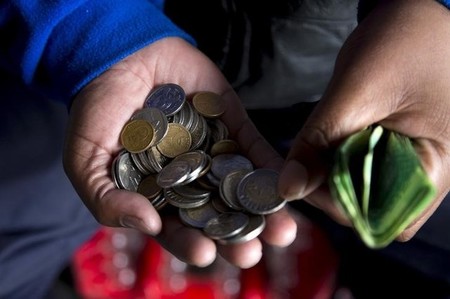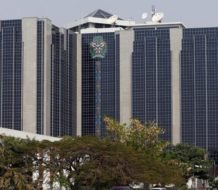JOHANNESBURG (Reuters) – Rate increases by South Africa’s central bank have left at least 10 million people crippled by debt in a country where many people buy on credit.
The result may be a further slowdown in South Africa’s slumping economy, which is now expected to grow just 0.9 percent in 2016. That would only aggravate the problem for those struggling with debt.
South Africa’s unemployment rate is already at a record high of nearly 27 percent. Food prices are soaring as a drought afflicts southern Africa.
Consequently, many households are borrowing to put food on the table. But inflation exceeds the central bank’s target of 3 to 6 percent, leading it to raise interest rates by 200 basis points in the past two years.
Inflation slowed to 6.2 percent in April, but commercial banks have raised their lending rates. Home loans now average around 10.5 percent, up from a low of 8.5 percent in 2012.
“Almost 75 percent of the income of the average household in South Africa is spent towards credit providers, to pay debt, so at the end of the day they don’t have enough money left to pay for their living expenses,” said Neil Roets, chief executive of Debt Rescue, a local company that helps clients manage debt.
“It’s had a devastating effect on consumers, especially because of the fact that a lot of consumers already find themselves in a situation where they are over-indebted,” he said, referring to the rising rates.
Industry officials say about 47 percent of the consumers that buy on credit are in debt arrears. About 10 million people, or a fifth of South Africa’s 52 million people, buy on credit.
The TransUnion South Africa consumer credit index, a gauge of consumer credit health, fell to a three-year low in the first quarter of this year. Debt defaults, defined by three months of arrears, rose 1.8 percent year-on-year during the quarter, after shrinking 5.3 percent in the fourth quarter of 2015.
Analysts said South Africans are still paying the price for unbridled lending that fuelled a consumer frenzy. That helped the economy grow an average 5 percent a year in the five years before 2009, when a recession wiped out nearly a million jobs.
Households are now reluctant to take up new debt. Private sector credit grew in April at its slowest rate since late 2013, central bank data showed.
Retailers are feeling the pinch across the board, with consumer demand for non-essential goods in particular dropping. New vehicle sales fell 10.3 percent in May from the same month last year, the sixth consecutive contraction.
“Both consumer and business confidence is unlikely to improve significantly in the short term, given the poor economic outlook and the poor job market,” Nedbank analysts Johannes Khosa and Dennis Dykes said in a note.
“Credit growth is likely to remain contained in the months ahead as the economic environment remains weak.”
(By Stella Mapenzauswa. Editing by James Macharia, Larry King)




